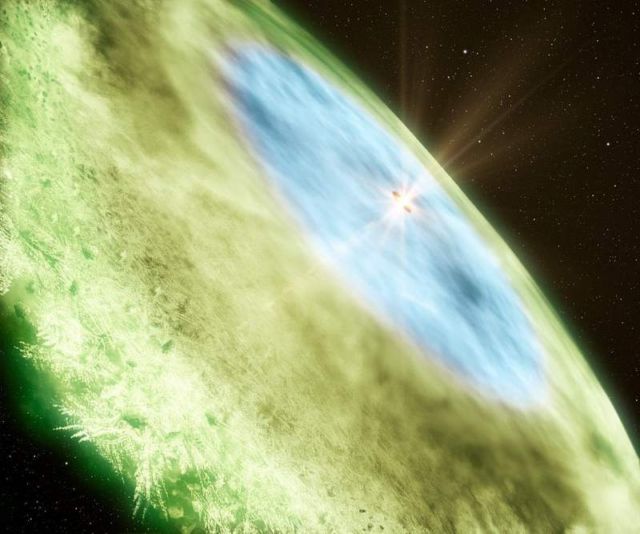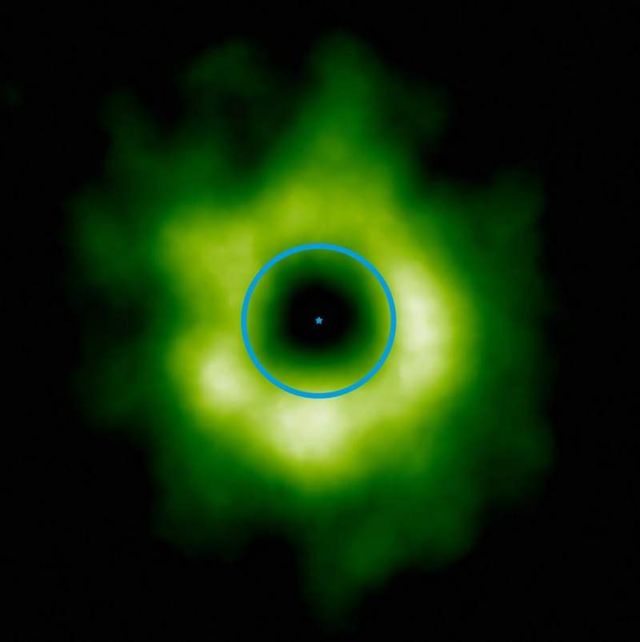A snow line has been imaged in a far-off infant planetary system for the very first time.
The snow line, located in the disc around the Sun-like star TW Hydrae, will tell us more about the formation of planets, comets and the history of the Solar System.
Astronomers using the Atacama Large Millimeter/submillimeter Array (ALMA) have taken the first ever image of the snow line in an infant planetary system. On Earth, snow lines form at high altitudes where falling temperatures turn the moisture in the air into snow. This line is clearly visible on a mountain, where the snow-capped summit ends and the rocky face begins.
Above, the transition from blue to green marks the carbon monoxide snow line. The snow helps grains of dust to adhere to each other by providing a sticky coating, which is essential to the formation of planets and comets. Due to the different freezing points of different chemical compounds, different snow lines can be found at various distances from the star. Credit B. Saxton & A. Angelich/NRAO/AUI/NSF/ALMA (ESO/NAOJ/NRAO)
The snow lines around young stars form in a similar way, in the distant, colder reaches of the dusty discs from which planetary systems form. Starting from the star and moving outwards, water (H2O) is the first to freeze, forming the first snow line. Further out from the star, as temperatures drop, more exotic molecules can freeze and turn to snow, such as carbon dioxide (CO2), methane (CH4), and carbon monoxide (CO).
Each of these different snow lines — for water, carbon dioxide, methane and carbon monoxide — may be linked to the formation of particular kinds of planets.
Around a Sun-like star in a planetary system like our own, the water snow line would correspond to a distance between the orbits of Mars and Jupiter, and the carbon monoxide snow line would correspond to the orbit of Neptune.
This image, taken from the ALMA observatory in Chile, shows the region (in green) where carbon monoxide snow has formed around the star TW Hydrae (indicated at centre). The blue circle represents where the orbit of Neptune would be when comparing it to the size of the Solar System. The transition to carbon monoxide ice could also mark the inner boundary of the region where smaller icy bodies like comets and dwarf planets like Pluto and Eris would form. Credit ALMA (ESO/NAOJ/NRAO)
source ESA







Leave A Comment